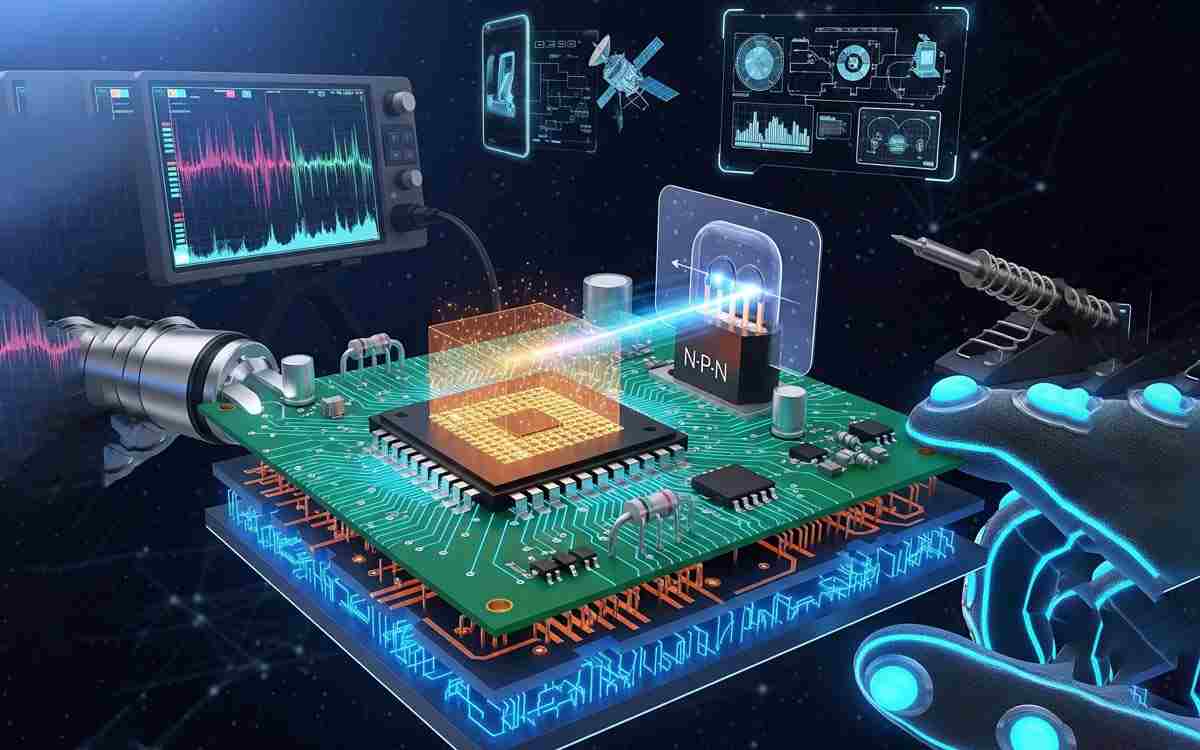Look around you. The smartphone in your hand, the laptop on your desk, the smart TV on your wall, even the car you drive—all are marvels of the modern age. But beneath their sleek exteriors lies an invisible, intricate dance of electrons, choreographed by the fundamental principles of electron devices and circuits. This isn’t just abstract engineering; it’s the very language of our digital existence.
In this post, we’ll pull back the curtain on this silent symphony, exploring the core components that make it all possible.
The Building Blocks: From Vacuum Tubes to Solid-State Revolution
Table of Contents
The story begins not with silicon, but with glass. The first true electron device was the vacuum tube. These fragile glass envelopes, which controlled the flow of electrons in a near-vacuum, made the first half of the 20th century tick. They powered everything from early radios and telephones to the colossal first-generation computers like ENIAC. But they had glaring flaws: they were large, power-hungry, generated immense heat, and were notoriously unreliable.
The revolution came with the invention of the transistor in 1947 at Bell Labs. This tiny semiconductor device could do everything a vacuum tube could—amplify signals and act as a switch—but it was smaller, more efficient, cooler, and far more reliable. The transition from vacuum tubes to transistors marked the shift from the electrical age to the electronic age. This was the birth of “solid-state” electronics, where electrons flow through solid semiconductor material instead of a vacuum.
The Heart of it All: Semiconductor Devices
Transistors are the workhorses, but they are part of a larger family of semiconductor devices that form the foundation of all modern circuits.
- Diodes: The one-way streets of electronics. A diode allows current to flow freely in one direction but blocks it almost completely in the other. This simple property is crucial for converting alternating current (AC) from your wall outlet into the direct current (DC) that your devices need to function—a process called rectification.
- Transistors: The amplifiers and switches. As amplifiers, they take a small input signal (like a faint voice captured by a microphone) and produce a much larger, identical output signal (powerful enough to drive a speaker). As switches, which is their primary role in digital circuits, they exist in one of two states: ON (1) or OFF (0). This binary operation is the literal bit upon which all computing is built. Millions, and now billions, of these microscopic switches can be packed onto a single chip.
- Integrated Circuits (ICs): The great leap forward. An IC, or microchip, isn’t a single device but an entire circuit—transistors, resistors, capacitors, and their connections—etched onto a tiny piece of semiconductor material, typically silicon. This miniaturization, famously predicted by Moore’s Law, is what allows immense processing power to reside in the palm of your hand. From a simple timer chip to a complex central processing unit (CPU), ICs are the brains of the operation.
Bringing Devices to Life: The Role of Circuits
An electron device by itself is just a component. It’s like a single musical instrument. It’s only when you arrange these instruments into an orchestra—a circuit—that you can create a symphony.
Circuits provide the framework and rules for how devices interact. There are two primary types:
- Analog Circuits: These deal with continuous signals. The voltage or current smoothly varies over time, much like a wave. Analog circuits are designed to amplify, filter, or modify these real-world signals. The sound coming out of your headphones, the radio station you tune into, and the sensor reading the temperature in your room are all processed by analog circuits first.
- Digital Circuits: These deal with discrete signals—ones and zeros. The world of digital circuits is a world of logic: AND, OR, NOT. By combining millions of transistor switches according to these logic rules, digital circuits can perform incredibly complex calculations, store vast amounts of data, and execute instructions. Your computer, smartphone, and Wi-Fi router are fundamentally digital machines.
Most modern devices are a hybrid system. An analog circuit might capture your voice, then a converter (ADC) turns that smooth analog wave into a stream of digital numbers for processing. After the CPU works its magic, another converter (DAC) turns the digital data back into an analog signal to be played through your speaker.
The Invisible Engine
The next time you scroll through social media, stream a movie, or use GPS to navigate, take a moment to appreciate the invisible engine at work. It’s a complex, layered ecosystem where fundamental physics, material science, and ingenious design converge. From the quantum behavior of electrons in a semiconductor to the mind-boggling complexity of a billion-transistor processor, electron devices and circuits are the unsung heroes. They are the silent symphony conductors, orchestrating the flow of information that defines our lives.

